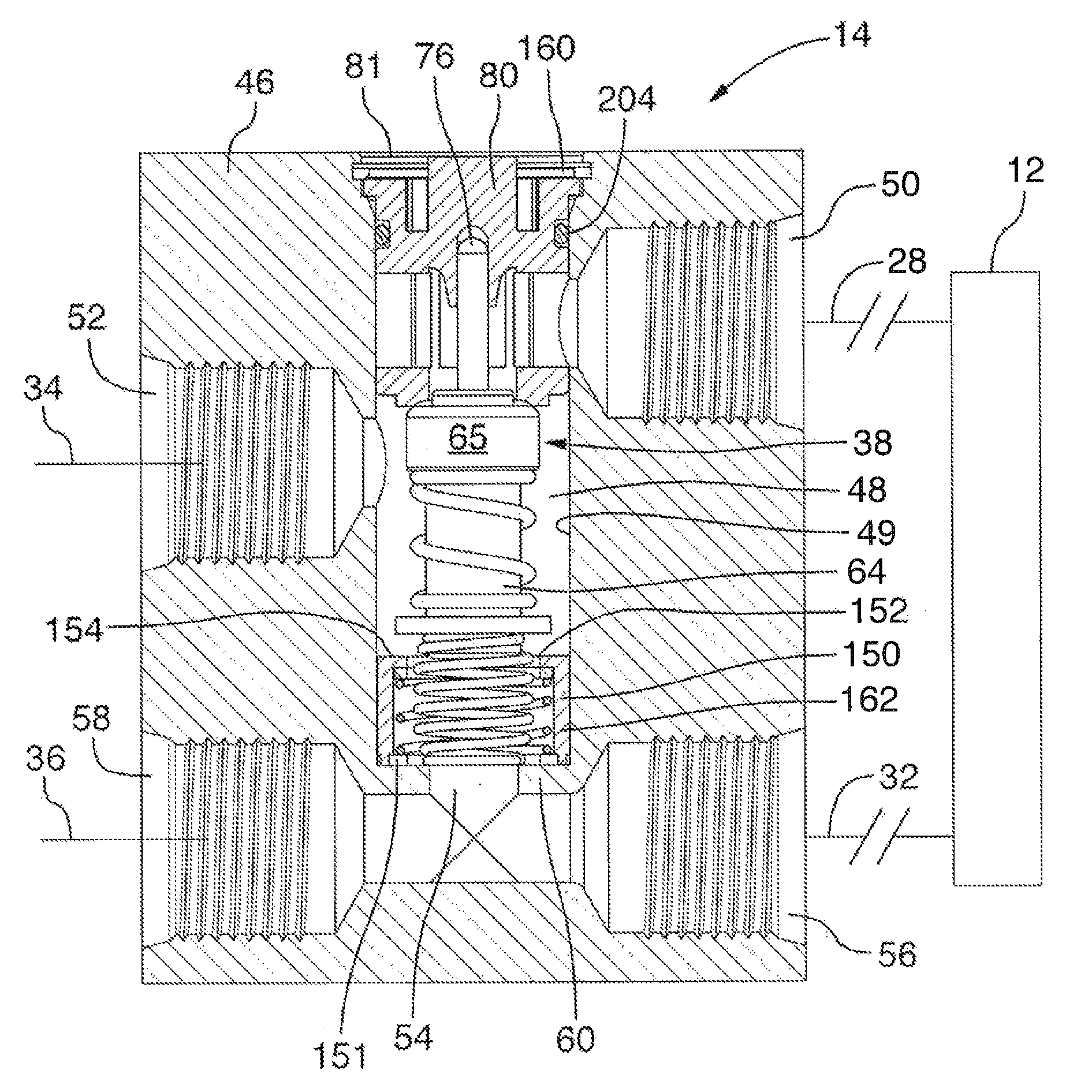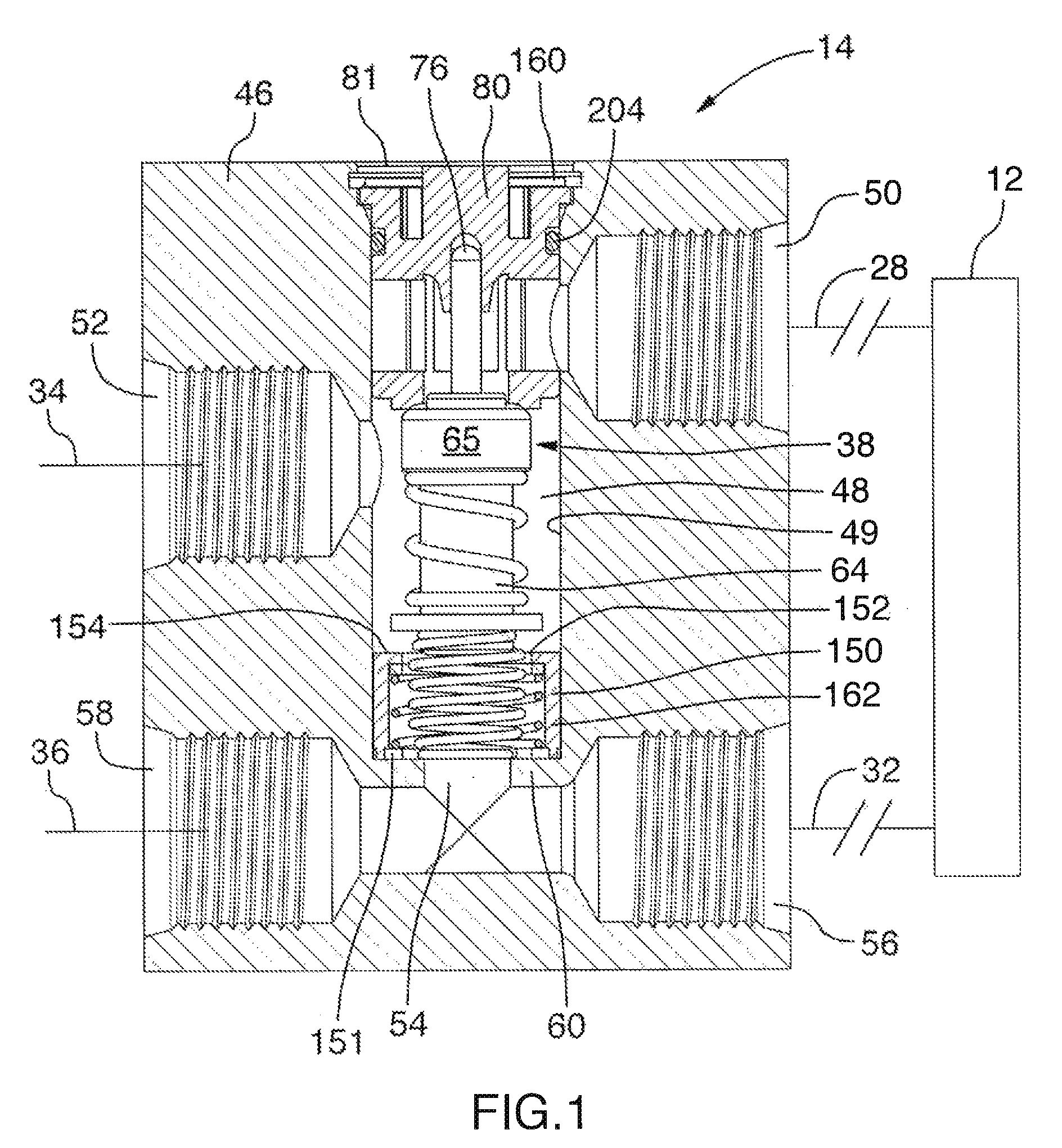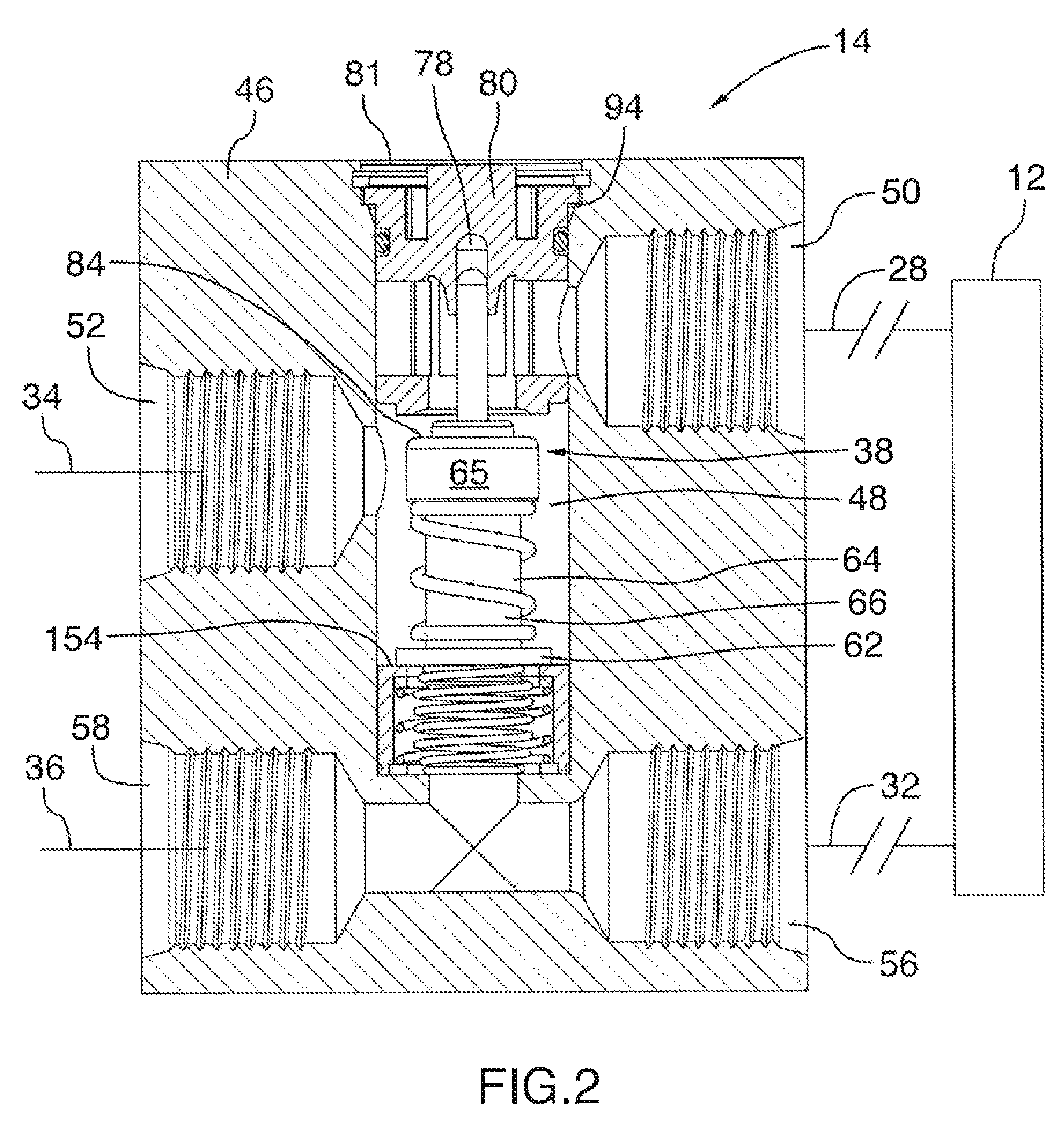Thermal bypass valve with pressure relief capability
a bypass valve and heat exchanger technology, applied in the direction of machines/engines, process and machine control, instruments, etc., can solve the problems of high pressure, damage or erratic performance, and cumulative damage to the transmission, so as to reduce the excessive pressure and extend or retract in dependence
- Summary
- Abstract
- Description
- Claims
- Application Information
AI Technical Summary
Benefits of technology
Problems solved by technology
Method used
Image
Examples
Embodiment Construction
[0037]With reference to FIGS. 1 and 2, there is shown an example of a by-pass valve, indicated generally by reference 14, which can be used in a heat exchanger circuit to control the flow of a fluid, such as transmission fluid, to a heat exchanger 12 to which first and second conduits 28 and 32 are connected. The heat exchanger 12 can be a cooler or cooler unit of standard construction if it is being used to cool transmission fluid or transmission oil. The conduits 28, 32 are connected to an outlet port 50 and an inlet port 56 of the valve. These ports can also be considered aperture means which are connected to a valve chamber 48 for supplying and returning the transmission fluid to and from the heat exchanger 12. Conduits 34, 36 are also connected to ports 52, 58 in the valve 14 and these conduits 34, 36 can be connected to a vehicle component such as a transmission (not shown). The valve 14 is referred to as a four port by-pass valve because the four conduits 28, 32, 34 and 36 ar...
PUM
 Login to View More
Login to View More Abstract
Description
Claims
Application Information
 Login to View More
Login to View More - R&D
- Intellectual Property
- Life Sciences
- Materials
- Tech Scout
- Unparalleled Data Quality
- Higher Quality Content
- 60% Fewer Hallucinations
Browse by: Latest US Patents, China's latest patents, Technical Efficacy Thesaurus, Application Domain, Technology Topic, Popular Technical Reports.
© 2025 PatSnap. All rights reserved.Legal|Privacy policy|Modern Slavery Act Transparency Statement|Sitemap|About US| Contact US: help@patsnap.com



